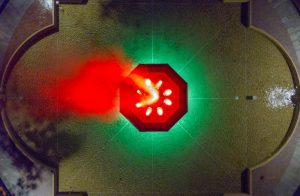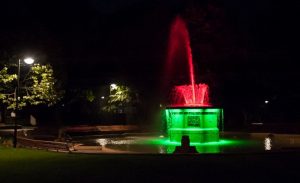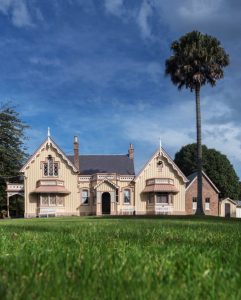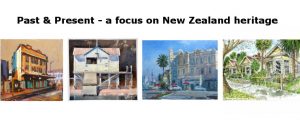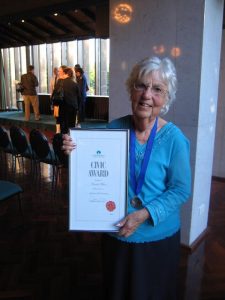Submission of Historic Places Canterbury on the Building Amendment Bill 2018
1. Our comments
Historic Places Canterbury supports the policy objectives of the Building Amendment Bill. The experience of the Canterbury Earthquakes illustrated the shortcomings of the exisiting legislation both in regards to managing buildings after an emergency event and in relation to investigating serious failures.
2. Sections 207C - 207S
We believe the power to investigate major building failures is vital if lessons are to be learned which could help avoid future building failures and potential loss of life. We believe that the measures proposed in this Bill strike an appropriate balance between the need for investigation and the rights of property owners and other affected individuals.
3. Subpart 6B Special Provisions for buildings affected by emergency
We recognise that the Bill proposes significant improvements over the current situation in relation to managing buildings after an emergency and it will avoid the need for special empowering legislation to deal with those shortcomings as was required following the Canterbury earthquakes.
It is pleasing to see that these proposed amendments to the Building Act directly address the serious shortcomings that occurred in relation to heritage buildings following the Canterbury earthquakes but we have some reservations as to whether that protection goes far enough. We accept that protection of life safety must have primacy over heritage issues (and that this can include risk to critical infrastructure). Hence we accept a need to draw a distinction between the rules set out in 133BU ( Urgent works to remove or reduce risks) and 133BV (Works to remove or reduce other risks). However we are concerned that the requirement for the responsible person to obtain Ministerial approval for demolition of a heritage building is limited to Category 1 and Landmark buildings on the Heritage New Zealand Register. This involves the false assumption that all the most significant heritage buildings will be listed by Heritage New Zealand,(HNZ) but this is not the case. If a significant building is already protected by a Territorial Local Authority (TLA) then HNZ may have opted to apply its scarce resources to registering another building, given that district plan listing is the key listing for protection under the Resource Management Act. A good example of a key building not listed by HNZ is the Christchurch Town Hall but which is listed as Highly Significant by the Christchurch City Council. The problem identified here could be overcome by extending coverage of the section to Highly Significant heritage buildings listed by TLAs (however they may be described in the relevant district plan). However the reality of the situation for many small towns and rural areas in New Zealand is that most of their heritage buildings will be Category 2 or simply listed as protected in the district plan. If the provisions of this proposed section are limited to Category 1 buildings then smaller towns could potentially lose most or all of their heritage buildings following a major earthquake, especially as these will typically be on the major thoroughfare through the town, so for this reason may well pose a risk to critical infrastructure. Significant loss of heritage from small towns or rural areas would constitute a major loss for the cultural heritage of the country. We understand that extending the requirements of this provision to all listed heritage buildings would place a more onerous responsibility on the the 'responsible person' and the Minister than confining the section to Category 1 and landmark buildings, but if heritage listing is to be meaningful, then all listed buildings should be worthy of consideration. A national register of all listed heritage buildings would be helpful in the case of emergencies to ensure that the responsible authorities are aware of which buildings are heritage buildings. The suggested extension to the section would also require notification to the TLA (if it is not already the responsible authority).
S. 133BV(3)
We fully support the application of this section to all heritage buildings. We have a minor reservation relating to the wording. S. 133BV (3) (a) states that the responsible person must consult with various persons listed in 133BV(3) (a) (i) - (vii) " if it is reasonably practicable to do so". While one can readily see that it may not always be practicable, for example, to locate the owner or occupiers of the building or persons with a mortgage interest etc, it is difficult to conceive of a situation in which it would not be reasonably practicable to consult with HNZ or the territorial authority. We would feel happier with a less discretionary provision in relation to HNZ and the TLA and a stronger directive than merely to consider their views. With the current wording the 'responsible person' seems to be granted greater discretion to deal with a Category 1 building in the less urgent situation envisaged by S. 133BV than in the previous section where Ministerial approval is needed before carrying out demolition. It is clear that demolition may be an outcome of S. 133BV even though there is a requirement to consider alternatives to demolishing the building [S.133BV(3)(b)] but there is no comparable requirement to seek Ministerial approval. It seems an anomaly of the proposed changes that a building which might have been protected by the Minister withholding approval for demolition in the more serious situation dealt with in S.133BU, might be lost through the exercise of the discretion in S. 133BV if the situation is deemed to be one where S.133BU does not apply.
It should also be noted that at the time of an emergency there may be a number of buildings which are presently going through the process of listing either by HNZ or the TLA. It would be beneficial if these could be included, at the very least, in the provisions of S133BV. This would be difficult under the current law relating to heritage protection but it may be that as a result of the review of the heritage protection system being undertaken at present by the Ministry of Culture and Heritage there could in future be a provisional listing category to provide protection against pre-emptive destruction of buildings in the process of being formally listed. If such a change were to be introduced As in the case of listed buildings, a national register of provisional listings would assist those involved in emergency responses.
S .133 BP
We commend the inclusion of S. 133BP (4) (b) which requires those entering or inspecting a building to take all reasonable steps to ensure that minimal damage is caused to the buildings. This was a significant problem following the Canterbury earthquakes where, for example, doors were forced open and wrecked rather than applying the simple expedient of testing the door handle first. It is doubtful whether this legislative requirement will have much impact in reality unless it is backed up by a penalty for failure or at the very least a change in the culture of search and rescue personnel through training.
In conclusion, we welcome these proposed changes to the Building Act and believe, apart from the reservations that we have expressed here, that they will make a substantial contribution to dealing with future emergencies in a much more satisfactory way.
4. Our recommendations
We recommend the following changes:
That the requirement be extended to all heritage buildings by removing (a) and (b) from S133 BU (2)/
If this recommendation is accepted then consequential changes will be required to S 133BU (3) (4) and (5) to include reference to the TLA
S.133BV Insert a requirement that the Minister must approve demolition of a Category 1 listed building or landmark building (or if the recommendations in relation to S. 133BU are accepted, then the Minister must approve demolition of any listed heritage building.
 Historic Places Canterbury Deputation to Christchurch City Council.
Historic Places Canterbury Deputation to Christchurch City Council.










